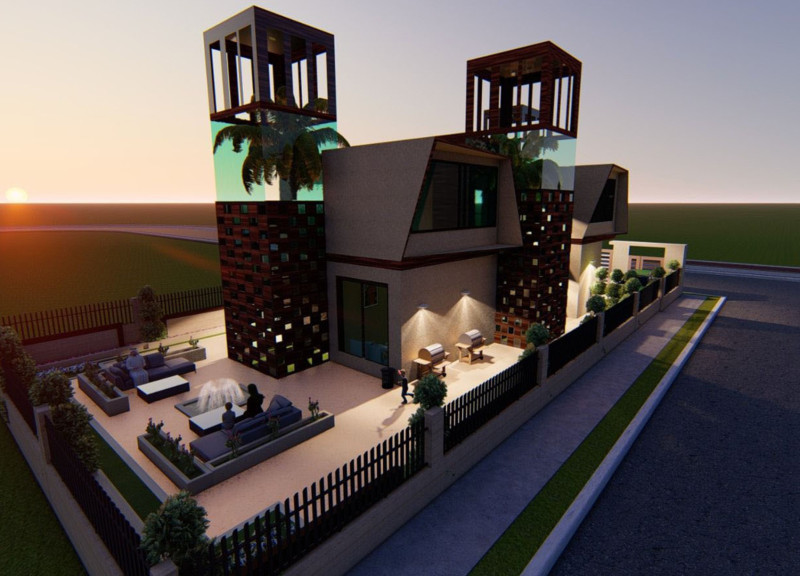5 key facts about this project
At its core, the project represents a harmonious blend of form and function. The architectural design prioritizes user experience and accessibility, making it a welcoming space for various activities. From community gatherings to artistic exhibitions, the building is designed to accommodate a wide range of functions, illustrating a versatile approach to urban architecture. This adaptability is further enhanced by the inclusion of flexible spaces that can be reconfigured as needs change over time, ensuring the building remains relevant and functional.
One of the most captivating aspects of this architectural project is its unique design approach, characterized by the integration of natural elements into the built environment. Large windows bring in abundant natural light, creating a warm and inviting atmosphere while establishing a visual connection with the surrounding landscape. The use of greenery, both inside and outside the building, reinforces the project's emphasis on sustainability. This green approach is not merely aesthetic; it also contributes to improved air quality and a more enjoyable environment for occupants.
The selection of materials plays a crucial role in both the structural integrity and aesthetic characteristics of the project. An interplay of natural and durable materials, such as locally sourced wood, stone, and metal, speaks to the project's commitment to sustainability. These materials have been chosen not only for their visual appeal but also for their environmental impact, reducing the carbon footprint associated with construction. The careful consideration of the material palette enhances the building's connection to its site, allowing it to resonate with the local context and cultural history.
The architectural plans reflect a well-considered layout that integrates various functions seamlessly. The entrance is designed to be inviting, leading occupants into a spacious lobby that serves as a circulation hub. This area is strategically placed to allow easy access to both public and private spaces within the building. Additional consideration is given to the flow of movement throughout the structure, with clearly defined pathways that guide visitors through different areas, enhancing user experience.
Architectural sections reveal the verticality of the space, giving insight into the second and third floors where various programmatic elements coalesce. These levels incorporate areas for meeting and collaboration, fostering a sense of community and encouraging interaction among users. The design actively promotes collaboration through open layouts and shared spaces, reflecting a modern understanding of how architecture can influence social dynamics.
The project's exterior design showcases a modern aesthetic, characterized by clean lines and a cohesive material palette that reflects regional architectural styles. The facade incorporates features that enhance energy efficiency, including overhangs to provide shade and reduce heat gain, allowing for substantial energy savings in climate control. This thoughtful approach to energy efficiency underscores a broader commitment to reducing environmental impact, aligning with the growing emphasis on sustainable architectural practices.
The uniqueness of this architectural project lies in its ability to blend utility with innovative design solutions. By creating spaces that are not only functional but also engaging, the design encourages community interaction and has the potential to become a central hub for local activities. The interplay of architecture, materials, and design ideologies culminates in a project that is both rooted in its place and forward-thinking in its approach to urban living.
For those interested in exploring this project further, detailed insights can be gained through a review of the architectural plans, sections, and overarching design ideas presented. Delving into the various architectural elements of this project will provide a richer understanding of its thoughtful composition and the careful curation of its spatial experiences.


























